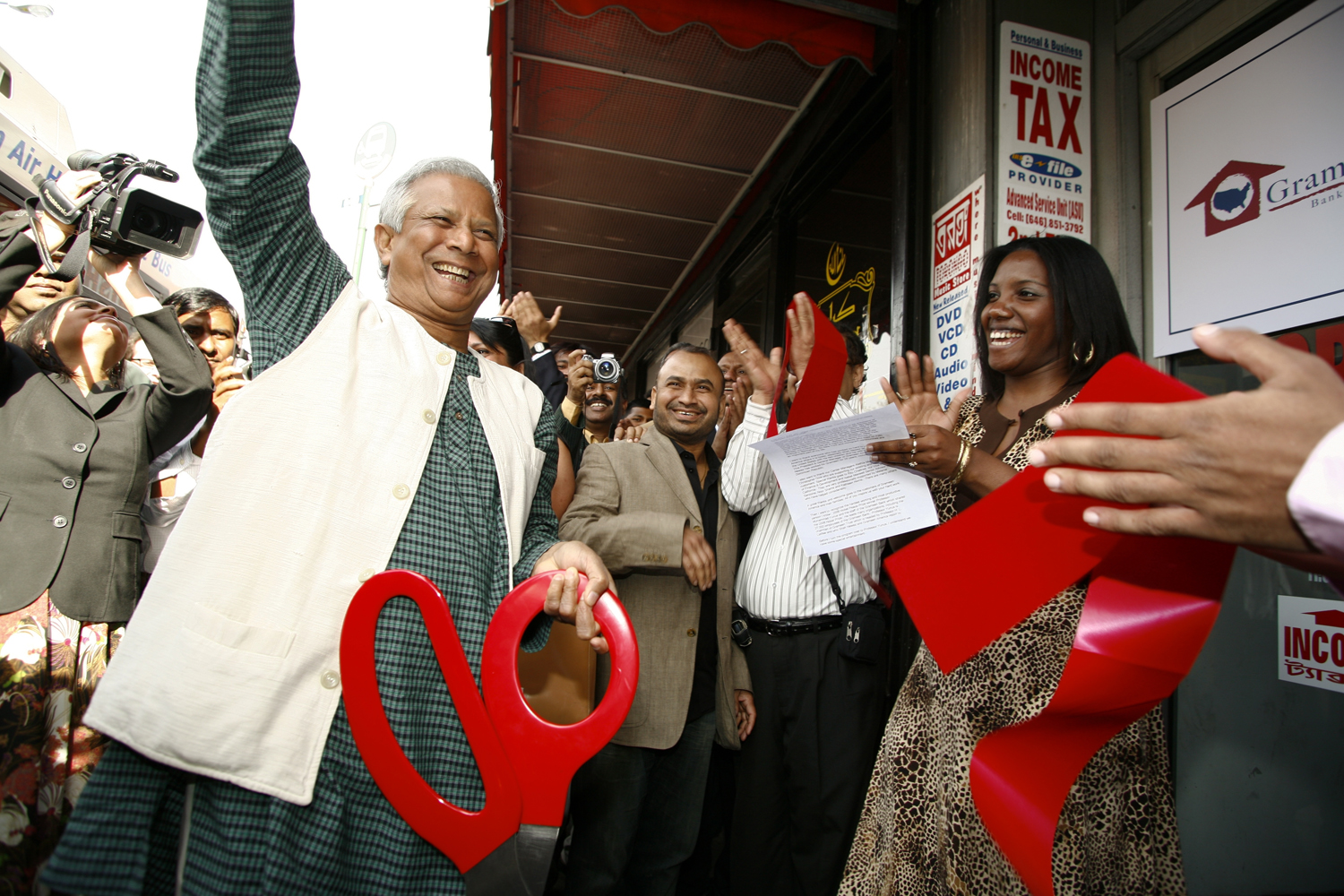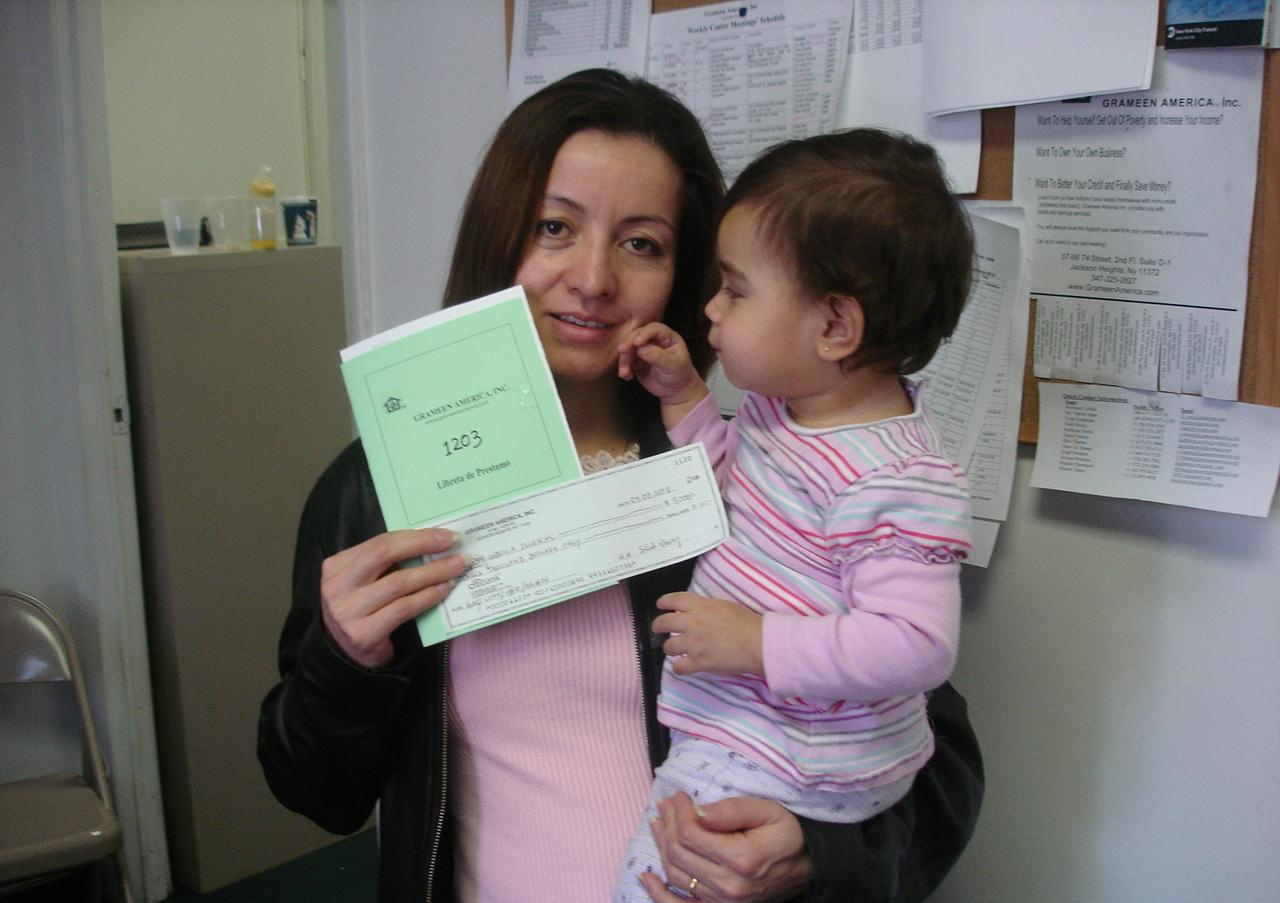While giant financial service institutions in the nation are shirking under the iron hand of the economy, microcredit organizations are seeing an opposite trend — the number of lenders has been steadily increasing.
Kiva, a Web-based microcredit non-profit in San Francisco, had a record month in February as its total monthly lending soared past $3.8 million.
 |
| Professor Yunus cuts the ribbon at the April 25th launch celebrations of Grameen America / Erica Lansner |
“Despite the economic situation, we are seeing lots of people lending smaller amounts of money,” said Fiona Ramsey, public relations director of Kiva. The organization also is seeing an increase in the number of people lending small amounts: since September, it has tripled.
“The idea of a loan, especially when people’s budgets are tight, is what is so attractive even through this economy,” Ramsey said. “It’s the most affordable way to help and people know that they are getting back their money.”
Ramsey said that the key factor to this increase is that loans are small — the average individual donation is $33. She added that 70 to 80 percent of Kiva lenders live in the United States.
The microcredit industry capitalizes on the notion of helping others help themselves. Lenders loan money to microcredit institutions that disseminate these loans to impoverished entrepreneurs around the world. After establishing their small businesses — selling cattle or setting up fruits stand, for example — the entrepreneurs begin to repay the loan. And most do repay. In Kiva’s case, it’s 97.93 percent.
“It takes little to start a tailor shop or some other small business so the likelihood of defaulting on a loan is very low, and lower risk is better for the lender,” said Anoshua Chaudhuri, assistant professor of Economics at San Francisco State University. She believes that the microcredit model could be viable in the United States and that the government should provide credit to individual entrepreneurs instead of larger companies. “Right now the money trickles down to them [impoverished entrepreneurs], but microcredit is a way of going from the ground up,” she said.
The microcredit model has proved successful in the United States already. Grameen America — sister to the Grameen Bank in Bangladesh, founded by microcredit pioneer, Muhammad Yunus — says it has lent $1.3 million to about 500 families in Queens, N.Y. Yunus, an economist, started the microcredit model on a microscopic scale. He loaned $27 to women who made bamboo furniture near Chittagong University in Bangladesh. The success of this model led him to establish the first stages of Grameen Bank in 1976, and as of last year, Grameen Bank had disbursed more than $7.12 billion to more than 7.5 million borrowers, 97 percent of who are women. A basic loan is generally $500 to $3,000 for a term of six months to a year, usually paid in weekly installments. The interest rate is 15 percent on a declining basis.
For their efforts in alleviating the condition of the poor, both Yunus and Grameen Bank were awarded the 2006 Nobel Peace Prize.
 |
| Grameen America borrower with her child / Courtesy of Grameen America |
Similar to Grameen America, Kiva is also taking a step to allow lenders to channel their loans to U.S. borrowers. Later this year, Kiva plans to add the United States to its lending list of 44 countries.
NamasteDirect, a microcredit organization in San Francisco that works with entrepreneurs in Guatemala, has seen an increase in its collaborations with other microcredit institutions.
Kristin Houk, president of NamasteDirect, said that one reason microcredit non-profits are prospering is that Americans are realizing that when the U.S. economy doesn’t do well, other economies around the world follow suit.
“I think people are definitely concerned about spending. But people recognize that a greater need exists outside the economic crisis, especially in other countries,” Houk said. “When our economy does poorly, theirs do too. So the advantage is recognizing how much worse it is for others.”










